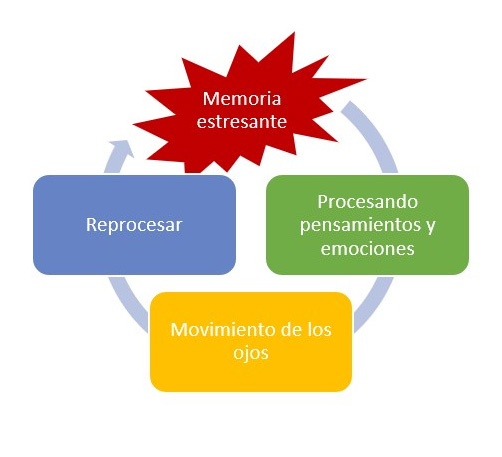What is EMDR?
Eye movement desensitization and reprocessing (EMDR) therapy is a specialized form of psychotherapy designed to help people overcome traumatic memories and experiences. EMDR looks a little different from typical psychotherapy, as the therapist may occasionally ask you to focus your gaze on a slowly moving object, such as a light or your hand, while talking about the trauma. Although the neurological basis of this treatment is still unclear (see Calancie et al, 2018), the effects of this treatment are real.
Here are some different explanations to help you understand EMDR a little better:
Many of us have had bad things happen to us in our lives. Sometimes people hurt us or make us feel gross or ugly. Sometimes something scary happens, like a car accident or seeing someone get hurt. When these things happen, many of us can feel afraid or sad, and we carry those feelings around with us like a heavy backpack full of stones.
But, it doesn’t have to stay that way. Sometimes it can help to get help. Many kids just like you can get better by trying EMDR, a type of therapy made to help take some of those feelings away.
You will meet with a therapist, someone specially trained to help kids like you, to take some of those stones out one by one and learn to set them aside. This happens by talking about what happened while focusing your eyes on a moving object, almost like you were watching windshield wipers in a car. You will start to feel better and better as you learn how to lighten your load and move forward in your life.
Think of your mind like a sort of internet browser, like Google Chrome or (dare I say) Microsoft Edge. You often have multiple tabs opened at once – one for thinking about school, one for thinking about friends, one for thinking about what you want for dinner.
The problem is, when bad things happen to us like being the victim of a crime or witnessing something terrible, we tend to get popups. You might be trying to focus on school, when suddenly your mind is flooded with painful memories and your heart starts racing. You might try to sleep, only to have a terrifying popup wake you with a nightmare. EMDR is a specialized form of treatment that acts like an antivirus program by confronting the popups head-on. You and your therapist meet one-on-one to talk about the popups and how they affect you. The therapist will have you focus your eyes on a moving target or light while you do so to help desensitize your brain, training it to become its own popup blocker.
Sometimes, we can experience emotional pain from difficult life experiences. Car accidents, surviving abuse, combat experience, and other forms of trauma affect more than just our bodies. In that way, EMDR is a lot like a deep tissue massage.
Rather than glossing over kinks and aches in your muscles, a massage therapist will often focus in on areas that cause the most pain. Although deep tissue massages can be painful, the body tends to experience soothing release from the day-to-day discomfort. EMDR acts the same way by specifically
targeting painful experiences and memories, processing and reprocessing, and providing you with peace and decreased stress. This also involves watching a moving target in-session, such as a light or the therapist’s hand, to help reduce your brain’s reactivity to the stress of those memories.
Although EMDR has some differences from typical psychotherapy treatment, it is also very similar. You and your therapist will meet one-on-one in a safe, confidential setting where the focus is on your needs and goals. You will have the freedom to talk about yourself without fear of judgement with a licensed professional who understands your pain.

